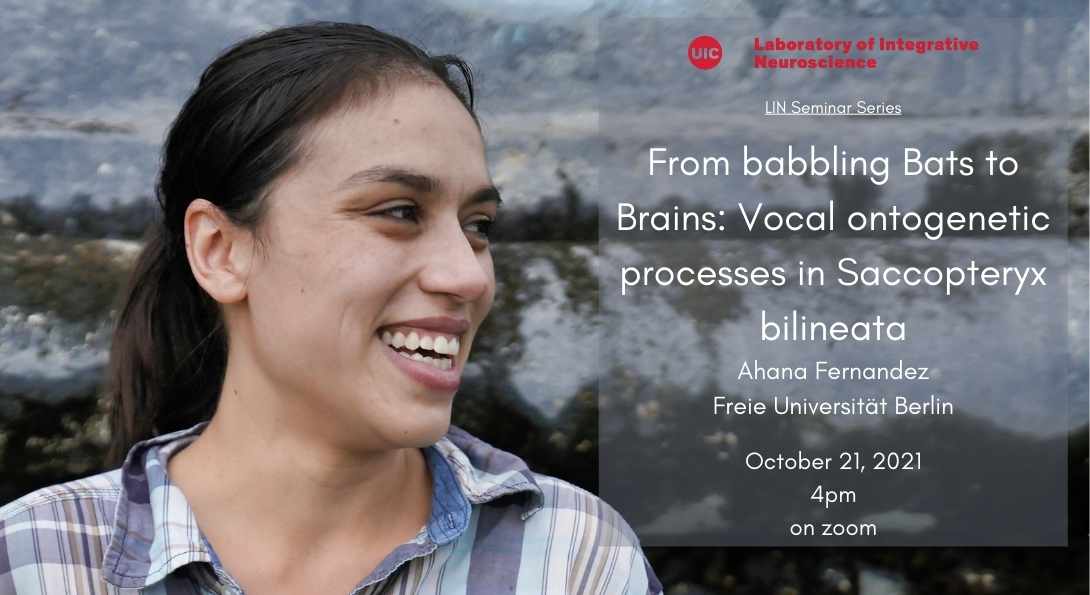LIN Seminar: “From babbling Bats to Brains: Vocal ontogenetic processes in Saccopteryx bilineata” by Dr. Ahana Fernandez (Museum of Natural History Berlin)
October 21, 2021
4:00 PM - 5:00 PM

Join us for "From babbling Bats to Brains: Vocal ontogenetic processes in Saccopteryx bilineata" by Dr. Ahana Fernandez (Museum of Natural History Berlin). This virtual seminar will be held on October 21, 2021 at 4pm.
Hosts: Angie Salles and Thom Park
Abstract: More than anything else, language defines human nature. Speech, the vocal output of language, requires precise control over our vocal articulators. Every infant faces the challenge of gaining precise control over the vocal apparatus to produce speech sounds. Babbling is a production milestone in speech development during which infants practice the production of canonical syllables, the speech sounds required for successful language acquisition. Typical child development involves babbling, irrespective of the culture and language to be learned and is thus characterized by universal features.
Much knowledge about human language acquisition is inferred through comparative studies on vocal ontogenetic processes in non-human animals, especially those capable of vocal imitation, one of the key components of human language. However, babbling behaviour is rare in the animal kingdom; so far, this phenomenon has been described almost exclusively in songbirds. While research on songbirds has provided us with crucial insights about speech development, it is partly difficult to fully translate the results to humans because songbirds and humans differ anatomically, for instance in their brain architecture.
The greater sac-winged bat, Saccopteryx bilineata, possesses a large vocal repertoire and is capable of vocal imitation. Furthermore, pups engage in a conspicuous vocal practice behaviour during ontogeny which is strongly reminiscent of human infant babbling. We studied the babbling behaviour of 20 wild bat pups in their natural habitat in Panama and Costa Rica from birth until weaning. The analyses of the acoustic recordings revealed that pup babbling is characterized by the same eight features that universally define human infant babbling, such as rhythmicity and reduplication. In addition, similar to speech development in human infants, the pups´ social environment shapes vocal ontogenetic processes, including behavioural and vocal interactions between mothers and pups. The striking parallels in the vocal practice behaviour and social interactions between two species with shared traits such as laryngeal sound production, similar brain architecture and the ability of vocal imitation offer exciting possibilities to understand proximate mechanisms of vocal imitation. Currently, I am using babbling behaviour – the behavioural readout of ongoing learning processes – to study the neuromolecular foundations of mammalian vocal learning.
For zoom details, please email Emily Beaufort (ebeauf2@uic.edu)
Date posted
Aug 27, 2021
Date updated
Oct 14, 2021